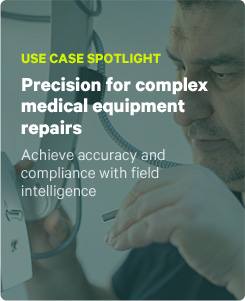
Birst Required Minimum End User Terms
Last updated on September 7, 2017
1. ACCESS RIGHTS; RESTRICTIONS
1.1 Access. Subject to customer’s compliance with the terms and conditions of this Agreement, OEM (“OEM”) provides access to and use of the Birst Solution only as incorporated into, or bundled with, OEM’s own service offering that adds substantial value to the bundle (“Integrated Solution”), during the term of this Agreement. For avoidance of doubt, OEM shall provided access to and use of the Birst Solution only as part of OEM’s Integrated Solution and not on a standalone basis.
1.2 Restrictions. Customer will not (and will not allow any third party to): (i) reverse engineer, decompile, disassemble, or otherwise attempt to discover the source code, object code, or underlying structure, ideas, or algorithms of the Birst Solution; (ii) modify, translate, or create derivative works based on the Birst Solution; (iii) copy, rent, lease, distribute, pledge, assign, or otherwise transfer or encumber rights to the Birst Solution; (iv) use the Birst Solution for timesharing or service bureau purposes or otherwise for the benefit of a third party (excepting Customer’s end users as part of the purpose contemplated in Section 1.1 above); (v) remove or otherwise alter any proprietary notices or labels from the Birst Solution or any portion thereof, or (vi) use the Birst Solution to create any other product or service. Customer will use the Birst Solution only in compliance with (i) this Agreement, (ii) the rights granted hereunder, and (iii) in accordance with all applicable laws and regulations.
1.3 Ownership. Except for the rights expressly granted under this Section 1, Birst (“Birst” or “OEM’S licensor”) retains all right, title, and interest in and to the Birst Solution (and all data, software, products, works, and other intellectual property created, used, or provided by Birst for the purposes of this Agreement). To the extent Customer provides OEM or OEM’s licensors with any feedback relating to the Birst Solution (including, without limitation, feedback related to usability, performance, interactivity, bug reports and test results) (“Feedback”), OEM’s licensor shall own all right, title and interest in and to such Feedback (and customer hereby makes all assignments necessary to achieve such ownership).
2. CONFIDENTIALITY
During the term of this Agreement, each party (a “Disclosing Party”) may provide the other party (a “Receiving Party”) with confidential and/or proprietary materials and information (“Confidential Information”). All materials and information provided by Disclosing Party to Receiving Party and identified at the time of disclosure as “Confidential” or bearing a similar legend, and all other information that the Receiving Party reasonably should have known was the Confidential Information of the Disclosing Party, shall be considered Confidential Information; for the avoidance of doubt, the Birst Solution and terms of this Agreement are Confidential Information of Birst. Receiving Party shall maintain the confidentiality of the Confidential Information and will not disclose such information to any third party without the prior written consent of Disclosing Party. Receiving Party will only use the Confidential Information internally for the purposes contemplated hereunder. The obligations in this Section shall not apply to any information that: (i) is made generally available to the public without breach of this Agreement, (ii) is developed by the Receiving Party independently from the Disclosing Party’s Confidential Information, (iii) is disclosed to Receiving Party by a third party without restriction, or (iv) was in the Receiving Party’s lawful possession prior to the disclosure to the Receiving Party and was not obtained by the Receiving Party either directly or indirectly from the Disclosing Party. Receiving Party may disclose Confidential Information as required by law or court order; provided that, Receiving Party provides Disclosing Party with prompt written notice thereof and uses its best efforts to limit disclosure. At any time, upon Disclosing Party’s request, Receiving Party shall return to Disclosing Party all Disclosing Party’s Confidential Information in its possession, including, without limitation, all copies and extracts thereof. Notwithstanding the foregoing, (a) Receiving Party may disclose Confidential Information to any third-party to the limited extent necessary to exercise its rights, or perform its obligations, under this Agreement; provided that, all such third parties are bound in writing by obligations of confidentiality and non-use at least as protective of the Disclosing Party’s Confidential Information as this Agreement and (b) all Feedback shall be solely Birst’s “Confidential Information.”
3. Termination. This license is effective for the duration indicated in the license agreement, unless terminated earlier. OEM may immediately terminate this license agreement in the event Customer violates any of the terms of this license agreement. Upon termination of this license agreement, Customer shall cease using the Birst Solution and documentation and either return the Birst Solution and documentation to OEM or destroy all copies of the Birst Solution and documentation.
4. Disclaimer. TO THE MAXIMUM EXTENT PERMITTED BY APPLICABLE LAW, OEM’S LICENSORS HEREBY DISCLAIM ALL WARRANTIES, EXPRESS, IMPLIED, OR STATUTORY, INCLUDING BUT NOT LIMITED TO, WARRANTIES OF MERCHANTABILITY, FITNESS FOR A PARTICULAR PURPOSE, NONINFRINGEMENT, REGARDING THE USE AND RESULTS OF THE BIRST SOLUTION, OR THAT USE WILL BE UNINTERRUPTED OR ERROR-FREE, AND ALL WARRANTIES ARISING OUT OF COURSE OF DEALING, COURSE OF PERFORMANCE, OR USAGE IN TRADE. SOME JURISDICTIONS DO NOT ALLOW THE EXCLUSION OF IMPLIED WARRANTIES, SO THE ABOVE EXCLUSION MAY NOT APPLY TO YOU.
5. Liability Limitations. TO THE EXTENT NOT PROHIBITED BY LAW, AND NOTWITHSTANDING ANYTHING TO THE CONTRARY, OEM’S LICENSOR WILL NOT BE LIABLE WITH RESPECT TO ANY SUBJECT MATTER OF THIS AGREEMENT, UNDER ANY CONTRACT, NEGLIGENCE, STRICT LIABILITY OR OTHER LEGAL OR EQUITABLE THEORY FOR (I) DIRECT DAMAGES; (II) ANY INDIRECT, INCIDENTAL, EXEMPLARY, SPECIAL, RELIANCE OR CONSEQUENTIAL DAMAGES INCLUDING BUT NOT LIMITED TO LOSS OF PROFITS; (III) COST OF PROCUREMENT OF SUBSTITUTE GOODS, TECHNOLOGY OR SERVICES; (IV) LOSS, INACCURACY, OR CORRUPTION OF DATA OR INTERRUPTION OF USE; (V) ANY MATTER BEYOND ITS REASONABLE CONTROL. THESE LIMITATIONS SHALL APPLY NOTWITHSTANDING THE FAILURE OF THE ESSENTIAL PURPOSE OF ANY LIMITED REMEDY.

